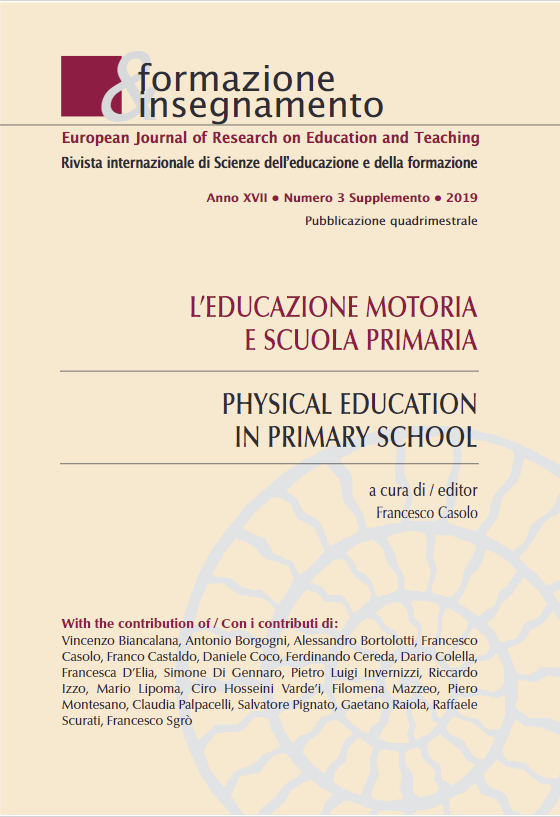Everyday active routines: the children’s right to move
DOI:
https://doi.org/10.7346/-feis-XVII-03-19_02Abstract
The article analyzes conventions, charts, and declarations aiming at the recognition of the children’s right to move being inspired by recent international documents regarding the theme of the movement through a rightsbased approach. The interpretation is based on the concept of capabilities and, secondary, on unperceived rights unfolding the connection between the right to move and the possibility to choose in the everyday life. Thereafter, a typical day of an 8-year-old pupil is described through a phenomenological approach and sustained by data from several sources. The description focuses on the possibility of the child to be, or not to be, active. This choice is based, from one side, to highlight the complexity of the phenomenon and the relevance of the choices of the adults (parents, relatives, teachers, trainers, animators) in promoting the movement, from the other side, to emphasize the relevance in terms of rights in relation to geographical and sociocultural variables influencing the possibilities to be active in everyday life. The conclusions reflect on the actual situation about the respect of the right to move, and on the fundamental role of the school, ending with some experimentation proposals.
Downloads
Published
How to Cite
Issue
Section
License
Copyright (c) 2020 Pensa MultiMedia

This work is licensed under a Creative Commons Attribution 4.0 International License.
Formazione & insegnamento is distributed under Attribution 4.0 International (CC BY 4.0).
For further details, please refer to our Repository & Archiving Policy, as well as our Copyright & Licensing Terms.





